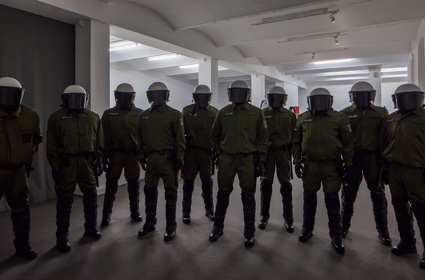 Julius von Bismarck, POLIZEI, 2015. Photo by Timo Ohler
Julius von Bismarck, POLIZEI, 2015. Photo by Timo Ohler
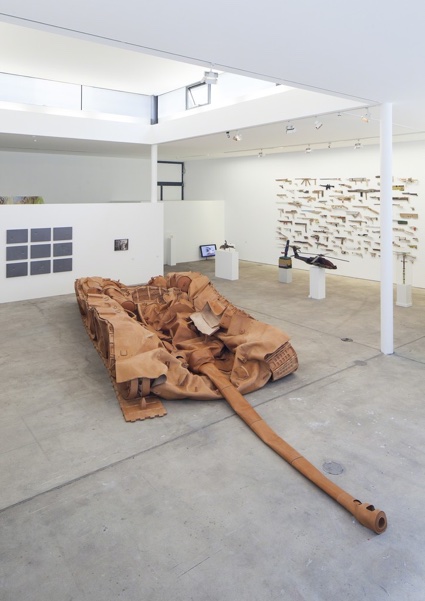 He Xiangyu, Tank, 2011-13. Plant-based-tanned leather. Photo by Timo Ohler
He Xiangyu, Tank, 2011-13. Plant-based-tanned leather. Photo by Timo Ohler
Fire and Forget is military jargon for a type of missile guidance that can hit its target without the launcher being in line-of-sight. The expression is symptomatic of a new type of warfare in which the people firing, killing and destroying are emancipated from the fear for their own life and the direct physical -or sometimes even visual- contact with the victim(s) of their shooting.
The exhibition Fire and forget. On violence currently on view at KW in Berlin asks whether this loss of direct physical confrontation has led to a new definition, production and perception of violence.
The show follows four main threads: the first one explores how Borders are decided and enforced to contain political, economic, cultural, religious, or ethnic tensions. Affect explores the long-term impact that violence from a distance has on the human psyche. Memory/Remembrance investigates whether history and commemoration inhibits or heighten violence. The final section looks at how the Event of violence itself reflects how each new situation is once again a singular moment of release, and of a decision for violence.
Fire and Forget is a brilliant and timely exhibition. However, while walking from room to room, i kept wondering why most works were not accompanied by descriptions and commentaries. Some of the pieces on show as self-explanatory, others left me frustrated. I could guess they were interesting and coherent with the whole show but i missed the elements to fully understand why.
Fortunately, i am a blogger and had plenty of time to waste online looking for the missing pieces of information…
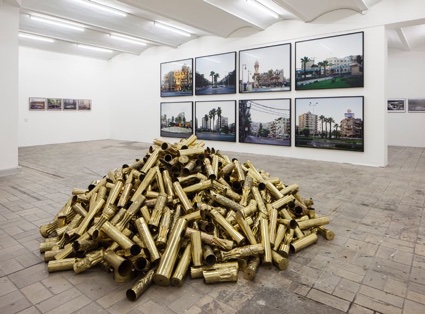 Kris Martin, Untitled, 2010. In the background, works by Henning Rogge and Hrair Sarkissian. Photo by Timo Ohler
Kris Martin, Untitled, 2010. In the background, works by Henning Rogge and Hrair Sarkissian. Photo by Timo Ohler
Many Europeans (and Americans) tend to associate the Middle East with violence and several pieces in the show brought some much needed nuance to our prejudices.
Sharif Waked, To Be Continued, 2009
Sharif Waked’s film, To Be Continued, follows the format of the “living martyr” videos made by a man or woman declaring in front of a camera their determination to carry out a suicide bombing mission.
In this video, however, the protagonist, played by Palestinian actor Saleh Bakri, doesn’t read his last will. Instead, he reads a lengthy excerpt from One Thousand and One Nights. By mixing the familiar and feared figure of the suicide bomber with poetic texts, Sharif Waked confounds our expectations of masculinity in the Islamic world.
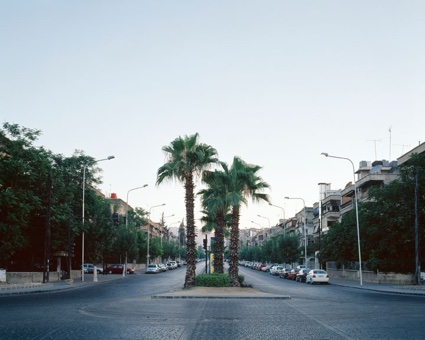 Hrair Sarkissian
, Execution Squares, 2008
Hrair Sarkissian
, Execution Squares, 2008
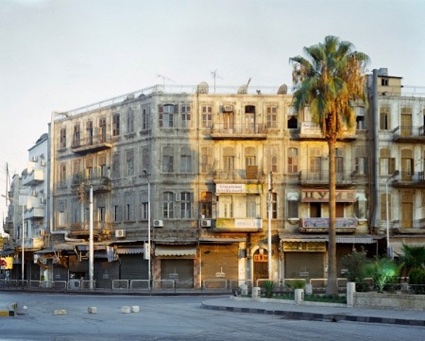 Hrair Sarkissian
, Execution Squares, 2008
Hrair Sarkissian
, Execution Squares, 2008
Video interview with Hrair Sarkissian on Execution Squares
Hrair Sarkissian’s series Execution Squares shows fourteen public squares in three Syrian cities (Aleppo, Lattakia and Damascus) at sun rise, the time when executions usually take place in the country. The condemned person is often brought to the square at 4.30am, and their body is left there until around 9am so that citizens can witness the scene on their way to school or work.
In the late 1990s and 2000, the practice became less frequent in Damascus because the capital had become more internationally visible, Sarkissian explained in an interview. But they kept doing it in other cities such as Aleppo, where at least one person was hanged every month.
The artist was as a schoolboy when he passed one of these squares and saw three bodies hanging in the street. The image has haunted him ever since. Sarkissian’s images show empty streets, there is not hanging body to gape at, no trace of violence. Yet, once you know the story, the photos seem to be haunted by the brutality that took place on those squares.
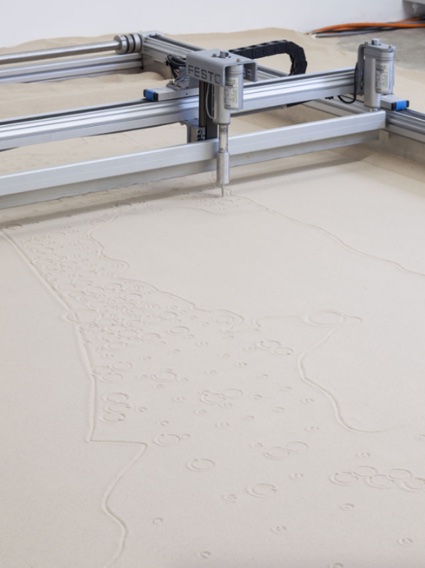 Roy Brand, Ori Scialom and Keren Yeala Golan, The Country Sand Printer, 2014. Photo by Timo Ohler
Roy Brand, Ori Scialom and Keren Yeala Golan, The Country Sand Printer, 2014. Photo by Timo Ohler
Nowhere does daily border violence manifests itself so stringently as inside and around the ever expanding Israel land. Walls, watchtowers, constant controls and other obstacles regulate the movements of Palestinians.
A room in the show is almost entirely occupied by The Country Sand Printer, by Roy Brand, Ori Scialom, and Keren Yeala Golan. The machine traces the evolution of the Israeli state through its settlements, reprinting over and over the expansion of Israel into the sand. A mechanic metal needle lightly draws lines in the sand, ensuring that traces of previous plans remain visible while new lines demarcate new territory borders.
A nearby video by Armin Linke, Road Block at Gaza City, Netsarem Settlement Beach Road (sorry couldn’t find any image of it online and i didn’t take any of the work while i was visiting the show) seems to respond to the invasive printing machine. The film shows how an event as banal as a roadblock near Gaza City forces Palestinians to make long and uncomfortable detours by foot in order to get to their intended destination. Colonization isn’t just a theft of land, it is also a theft of time.
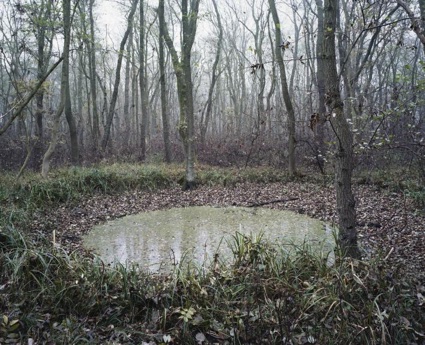 Henning Rogge, Mascheroder Holz, 2011
Henning Rogge, Mascheroder Holz, 2011
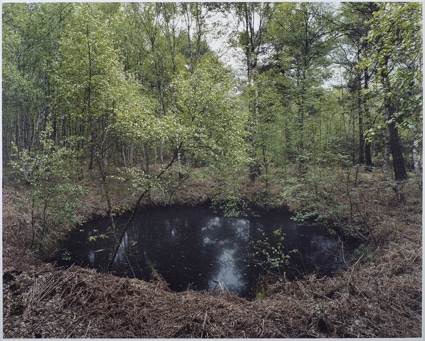 Henning Rogge, Altwarmbüchener Moor, 2013
Henning Rogge, Altwarmbüchener Moor, 2013
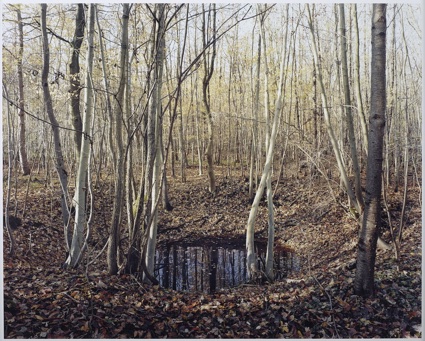 Henning Rogge, Projensdorfer Gehölz, 2013
Henning Rogge, Projensdorfer Gehölz, 2013
Like Sarkissian , Henning Rogge documents in photos the scars left by violent events. This time however the traces are still visible. His series shows how nature has adapted to the craters left by the bombs launched during World War II in Germany. After the war, the craters have slowly become part of the landscape and ecology, offering new pond habitats for animals, including endangered species.
Damien Hirst, Do It, 1995-96
The ultra short video above reminded me how good Hirst can be. The artist takes a gun and explain very quietly the best way to shoot yourself.
NEOZOON, Buck Fever (excerpt), 2012
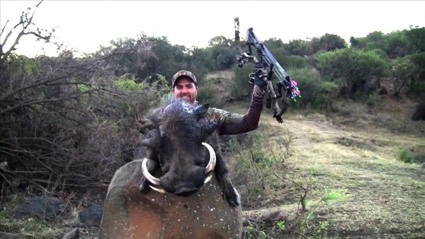 NEOZOON, Buck Fever (video still), 2012
NEOZOON, Buck Fever (video still), 2012
Buck Fever explores the emotions that surround the violence perpetrated against animals. The film is a You Tube collage of hunter amateur recording the moments directly preceding and following the shooting an animal.
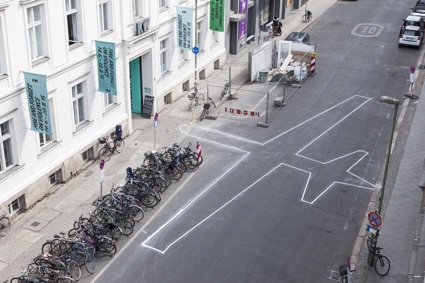 James Bridle, Drone shadow, ongoing project. Photo Timo Ohler
James Bridle, Drone shadow, ongoing project. Photo Timo Ohler
Guided missiles and drones are clear examples of Fire and Forget technology. James Bridle’s silhouette of a drone painted on the street in front of KW reminds us that, in spite of being located far away from the battlefield, drone operators fire but do not forget. Studies have shown that the pilots can still develop mental health problems like depression, anxiety as well as other symptoms of post-traumatic stress disorder.
More images from the show:
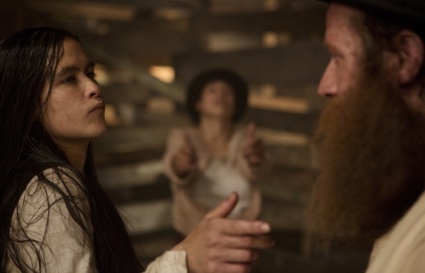 Joachim Koester, The Place of Dead Roads (production still), 2013
Joachim Koester, The Place of Dead Roads (production still), 2013
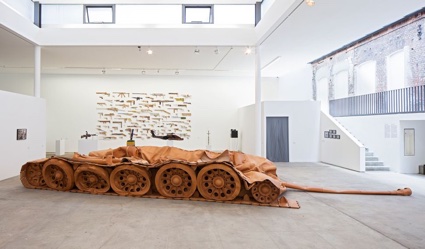 He Xiangyu, Tank, 2011-13. Plant-based-tanned leather. Photo by Timo Ohler
He Xiangyu, Tank, 2011-13. Plant-based-tanned leather. Photo by Timo Ohler
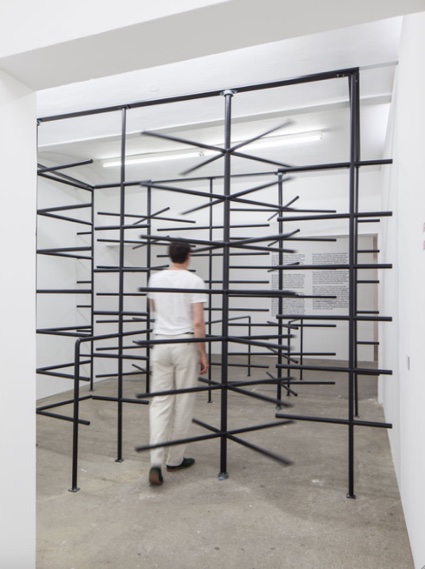 Daniil Galkin, Tourniquet, 2015
Daniil Galkin, Tourniquet, 2015
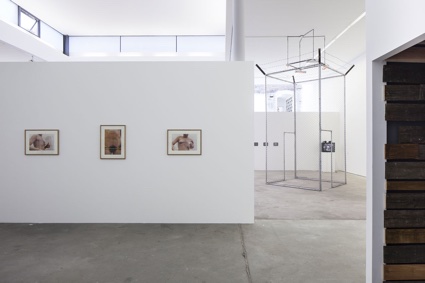 Fire and Forget. On violence, installation view. Photo: Timo Ohler
Fire and Forget. On violence, installation view. Photo: Timo Ohler
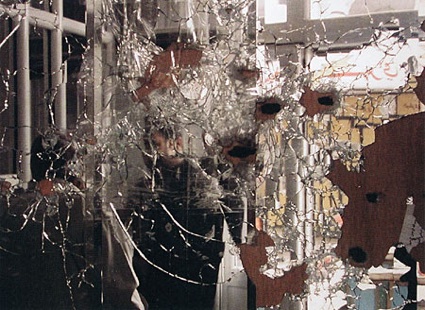 Emily Jacir, Bank Mirror, Ramallah, April 22, 2002, 2002
Emily Jacir, Bank Mirror, Ramallah, April 22, 2002, 2002
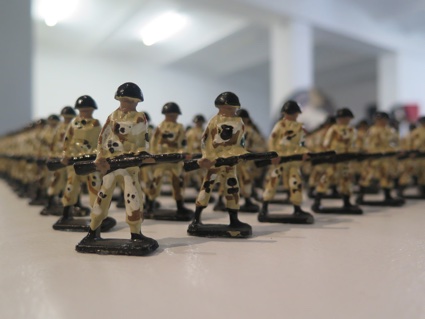
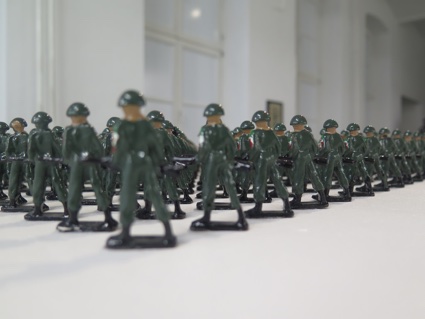
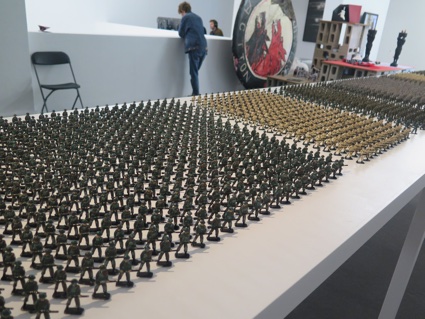 Ala Younis, Tin Soldiers, 2010
Ala Younis, Tin Soldiers, 2010
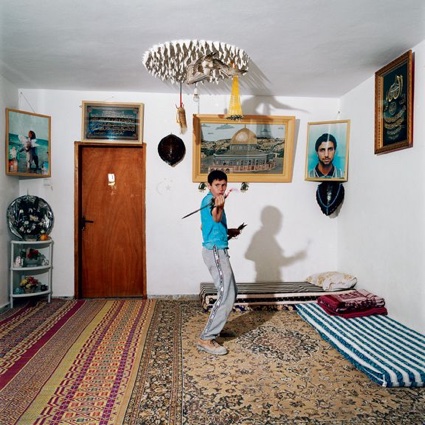 Ron Amir
, Malek, 2004
Ron Amir
, Malek, 2004
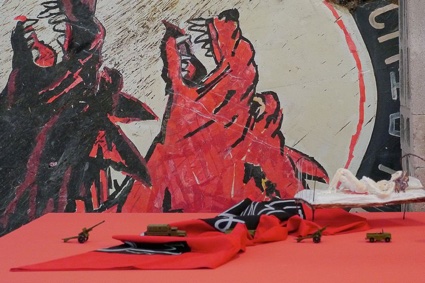 Chto Delat, Time Capsule. Artistic report on catastrophies and utopia, 2014/2015. Photo: Alexander Koch / KOW
Chto Delat, Time Capsule. Artistic report on catastrophies and utopia, 2014/2015. Photo: Alexander Koch / KOW
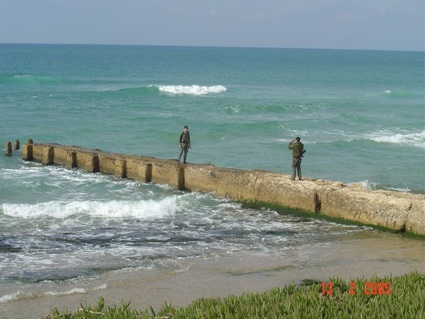 Mircea Cantor, Shooting, 2005
Mircea Cantor, Shooting, 2005
Fire and forget. On violence was curated by Ellen Blumenstein and Daniel Tyradellis. The show remains open until August 30, 2015 at KW Institute for Contemporary Art in Berlin.
